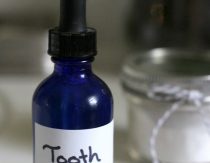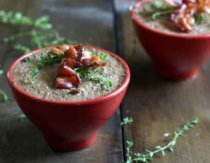
I unofficially announced my first pregnancy to my husband by bringing a 24 ounce jar of olives to bed, eating the entire thing, and then drinking the juice. With my second, I remember handing a half-eaten jar of Bubbies pickles to our local health food store cashier with an embarrassed smile – it was a long walk from the back of the store!
As just about any mama can attest, pregnancy cravings are real. But although sometimes our cravings guide us in the right direction, they can also steer us away from what’s best for us and our baby. That’s a big deal, because what we eat during pregnancy has a life-long impact on our children’s health.
- DNA and Destiny: Not What We Thought
- But first, meet my midwife
- What does an ideal pregnancy diet look like?
- Pregnancy Nutrition: The WHY of WHAT To Eat
- Vitamin A
- B Vitamins, Including Folate
- Vitamin C
- Vitamin D
- Vitamin E
- Vitamin K
- DHA and Omega 3 Fatty Acids
- Minerals
- What To Eat When Pregnant
- How much protein should I eat?
- Foods To Limit Or Avoid
- Should I take a prenatal?
- Feeling Overwhelmed?
- Book Recommendations
- Need help making REAL food work in REAL life?
DNA and Destiny: Not What We Thought ^
We used to think the genes we pass on to our children are unchangeable, like the keys on a piano. While that’s true, pianos don’t play themselves, and neither do our genes. External factors like our diet, sleep quality, stress levels and exposure to toxins influence which genes turn on and off – essentially determining what kind of “music” they play.

This interplay between genes and lifestyle is called epigenetics, which literally means “above” or “on top of” genes . . . kind of like the hands that play a piano. How we eat during pregnancy has a huge impact on epigenetics. We’re still trying to understand all of the implications, but so far a mama’s diet during pregnancy has been shown to influence a child’s lifelong risk of obesity, cancer, heart disease, Type 2 diabetes, and more. (source 1, source 2)
While that may sound scary at first, it’s actually very good news. Our DNA is not our destiny, and although it’s ideal to give our kids the best start possible with a healthy preconception and pregnancy diet, it’s also possible to positively influence our (and our children’s) genetic expression during every stage of life.
The nutrients that we’ll be discussing in this post are helpful for pregnancy for the same reason that they’re helpful all through life: they bring out the best in us. So wherever you are in your journey – trying to conceive, pregnant, nursing, or raising a family – I hope you will find this information helpful and pass it on!
But first, meet my midwife ^
Before we dive into the specifics, I want you to meet my co-author for this post. Jordan Callahan is a Certified Professional Midwife who has been working with families – including mine with baby #3 – in the birth field since 2007. She’s helped babies out in homes, birth centers, hospitals and overseas – there have even been some car surprises. Jordan has a special interest in nutrition research and enjoys discussing all things related to healthy eating and good food.
Now on to the post!
What does an ideal pregnancy diet look like? ^
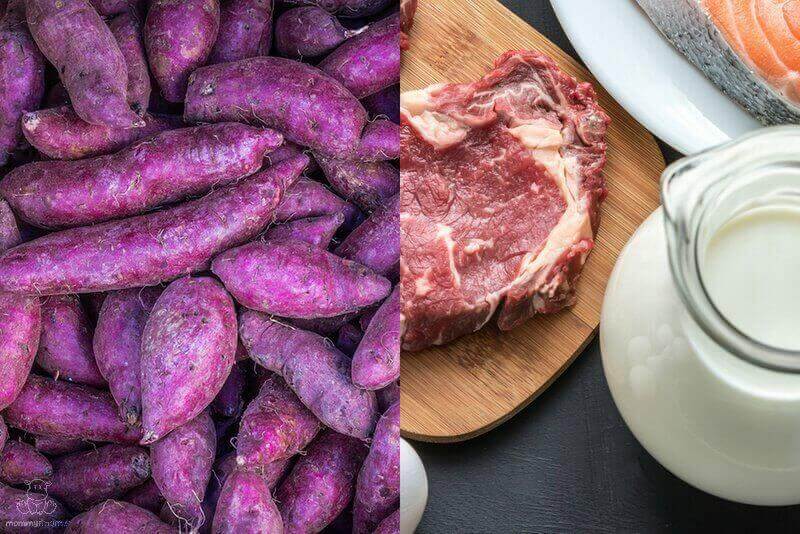
As much as we might wish for it, there is no one “perfect” diet that works for everyone. Our needs vary based on our genetics and lifestyle factors, such as how active we are.
How do genetics influence what food is best for us? Put simply, our bodies are usually adapted to eat what our ancestors ate, and that varies widely. For example, Okinawans traditionally consumed about 85% of their calories in the form of starch, mostly from purple sweet potatoes. (source)
Obviously that’s a very high carb diet, which is the opposite of what many experts recommend, and yet “Life expectancy was 86 years for women and 77.6 years for men. Life expectancy at age 65 is the highest in the world, at 24.1 years for females and 18.5 years for males. Finally, the Okinawan population has the highest prevalence of centenarians in the world. “
On the flipside, the Inuit people of the Arctic thrive almost exclusively consume protein and fat, with very fruits and vegetables. Interestingly, when they switch to a modern diet that has a higher carb ratio, they tend to develop health problems. (source)
What works for you will vary based on your genetics and lifestyle factors. However, there are some common principles/sacred foods regarded across many cultures as helpful for supporting women through preconception, pregnancy and breastfeeding.
Pregnancy Nutrition: The WHY of WHAT To Eat ^
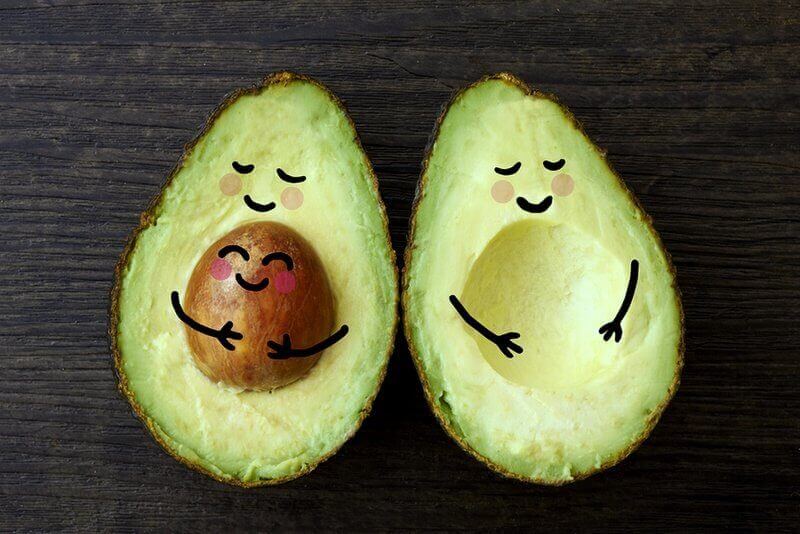
You’re here because you want to know WHAT to eat while you’re pregnant. But before we cover the WHAT, we need to talk about the WHY. Why? Because unless you know the WHY, you might let yourself believe that a multivitamin or set of supplements covers all the bases… and they really don’t.
Although there is a time for supplementation – and we’ll be talking more about that soon – the nutrients in food come with all kinds of cofactors that help us absorb them . . . cofactors that are often missing in supplements. You need real food, mama.
Don’t have time to dive into all the details right now?
No worries, you can skip ahead to the “What To Eat When Pregnant” section for a list of foods to embrace and foods to avoid, then come back later when you have more time.
Alright, back to the specifics. Have you ever thought about the intricate details that are happening inside your body during pregnancy? You could be lounging at the beach reading a good book while simultaneously building a baby’s nervous system! No big deal, right?
While your body may be on autopilot doing these miraculous tasks, it needs the proper building materials to effectively do its job. Because it can only use what is available, it’s vital to fill up on wholesome, nutrient-dense foods so that both you and your baby get what you need. Let’s first review some of the major nutrients and the roles they play during pregnancy, and then we’ll talk about the best way to incorporate them into the diet.
Vitamin A ^
Vitamin A is needed for the formation and growth of baby’s organs, bones, eyes and central nervous system. It supports mom’s immune health and fights infections, promotes tissue healing postpartum, and is critical for your baby to have good vision.
Nutrition labels often say that a food has “X” amount of Vitamin A, but what they really mean is that it contains carotenoids such as beta-carotene. Unfortunately beta-carotene is not biologically active, and therefore not the same as the bioavailable form of Vitamin A (retinol) found in animal products. Most of us do not possess enough of the enzyme needed to efficiently convert beta-carotene into bioavailable Vitamin A – in fact, this study found that only about 3% is converted, and about 45% of adults can’t make the conversion at all. (source 1, source 2)
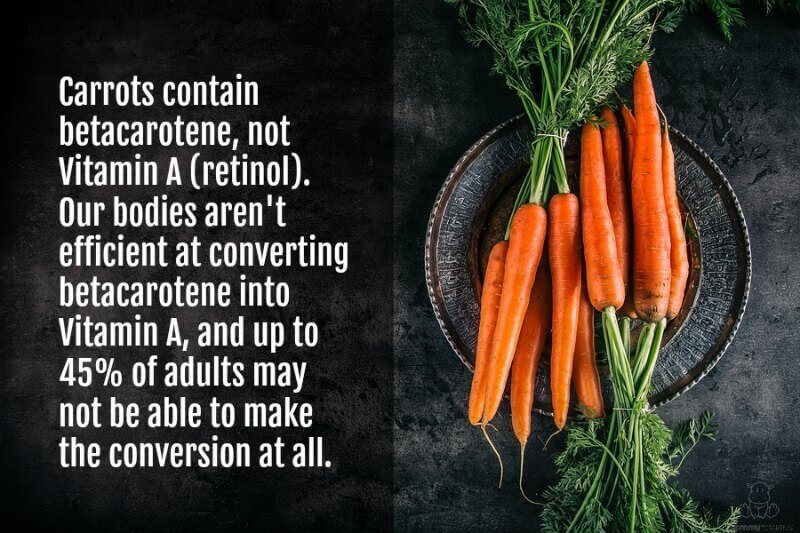
True bioavailable Vitamin A is found only in animal products such as cod liver oil, pastured butter, egg yolks, liver, and seafood.
The foods which contain the most bioavailable Vitamin A are liver (or liver capsules if you can’t stomach liver), pastured butter, milk, animal fats such as lard and tallow, and cod liver oil. Dark leafy greens, orange and yellow vegetables (sweet potatoes, carrots, squash, and peppers), cantaloupe, apricots and mangoes contain beta-carotene, and although you probably can’t eat enough of them to meet all your Vitamin A needs, they contain a lot of additional micronutrients which are beneficial during pregnancy.
Important note: You will find many warnings associated with vitamin A consumption, citing its toxicity and risk of birth defects if taken in excess. This warning is legitimate if you are taking Vitamin A supplements and getting it through fortified foods like cereal (another reason to avoid the middle aisles in the grocery store!), but consuming real foods where it’s naturally occurring is not a problem as long as you’re also optimizing your Vitamin D intake. Chris Kresser, LAc explains why here.
B Vitamins, Including Folate ^
MTHFR. Although it kind of sounds like a swear word, it’s actually the name of a genetic mutation that about 30-50% of us have. It’s a huge deal during pregnancy, because the MTHFR enzyme is what converts Vitamin B9 – also known as folate – into it’s usable form, methylfolate.
We’re often told to take extra folic acid before and during pregnancy to prevent spina bifida and neural tube defects, but for those us with MTHFR that simply won’t work. Our capacity to convert synthetic folic acid into usable form is reduced by 40-70%. Even worse, unconverted folic acid may stick to the folate receptor sites in our bodies and prevent us from getting the usable form.
For that reason, it’s really important to focus on getting Vitamin B9 in it’s natural form, which is more easily processed by the body. Some individuals also supplement with the bioavailable form (discussed in MTHFR FAQ’s) while making an effort to eat foods rich in other B Vitamins – especially B12 and B6 – which are essential for DNA synthesis and repair, neurotransmitter production, detoxification, immune function, brain development, eye health, digestion, and nervous system development.
Dark, leafy greens are an excellent source of B6 and B9, and B12 is found in animal products such as fish, meat, eggs, and dairy.
Vitamin C ^
Vitamin C is a water soluble vitamin that helps your body to fight infections, produce collagen for bone and joint health, stabilize blood sugar, heal wounds, and keep skin healthy. It also helps your body absorb iron, which keeps your hemoglobin levels optimal, preventing anemia. In pregnancy it helps with your baby’s tissue and bone formation, and its antioxidant properties strengthen the blood vessels of the placenta, reducing the risk of oxidative stress and preeclampsia (source). Recent studies have shown that Vitamin C can reduce the physical and psychological effects of stress. (source)
The best sources of Vitamin C are sauerkraut, citrus fruits, strawberries, kiwi, cauliflower, broccoli, tomatoes, dark greens, and peppers. A note that vitamin C is destroyed when exposed to heat, so eat these foods raw to gain the maximum benefit.

Vitamin D ^
Often called “The Sunshine Vitamin,” Vitamin D is known as the champion of strong bones and teeth. However, it’s also very important for fetal lung development, immune regulation, hormone balance, and the prevention of insulin resistance, neurological problems, and cardiovascular diseases. Mothers with optimal levels significantly reduce their risk of having gestational diabetes, infections, pregnancy-induced hypertension, preeclampsia and preterm birth. (source)
There are a few good food sources of Vitamin D, including cod liver oil, fatty fish and fish eggs, pastured butter, and eggs. However, according to MIT Senior Research Scientist Dr. Stephanie Seneff, Vitamin D supplements cannot fully replace sunshine, and sunlight is the best (and free!) way for the body to absorb and use vitamin D.
Research suggests that sunlight may have benefits that are separate from vitamin D production, too. Try to spend 10-15 minutes per day in the sun without sunscreen.
Vitamin E ^
Vitamin E, commonly known as tocopherol, was named by researchers after the Greek tokos (childbirth) and ferein (to bring forth). Originally it was called “Fertility Factor X” because rats were unable to produce offspring without it. (source) While it clearly plays a role in human reproduction, there is no conclusive evidence to support the how and why.
We do know it is an antioxidant that protects cells from free radical damage, supports cellular structure, keeps the immune system strong, and helps the body form red blood cells. New research suggests that if a mom’s levels are low at birth the child may be at a greater risk of developing asthma.(source 1, source 2)
Foods with the highest amount of Vitamin E include grass-fed animal fats, freshly ground grains, nuts, seeds, vegetables and fruits.
Vitamin K ^
Vitamin K is a fat-soluble vitamin that derives it’s name from the German word “koagulation.” (source) As you’ve probably guessed, that’s because it’s plays an essential role in blood clotting and wound healing. It partners with vitamin D to build strong bones and store calcium in bone tissue, helps with protein formation in the liver, and plays a role in preventing cardiovascular disease. Having adequate stores of vitamin K is especially important postpartum when recovering from childbirth and for your baby to prevent spontaneous external or internal bleeding to the brain, which is life threatening.
The two main forms are K1 and K2— K1 is obtained through green leafy vegetables and K2 is obtained through fermented foods and animal fats (cheese, butter and eggs) and is also synthesized by bacteria in your gut.
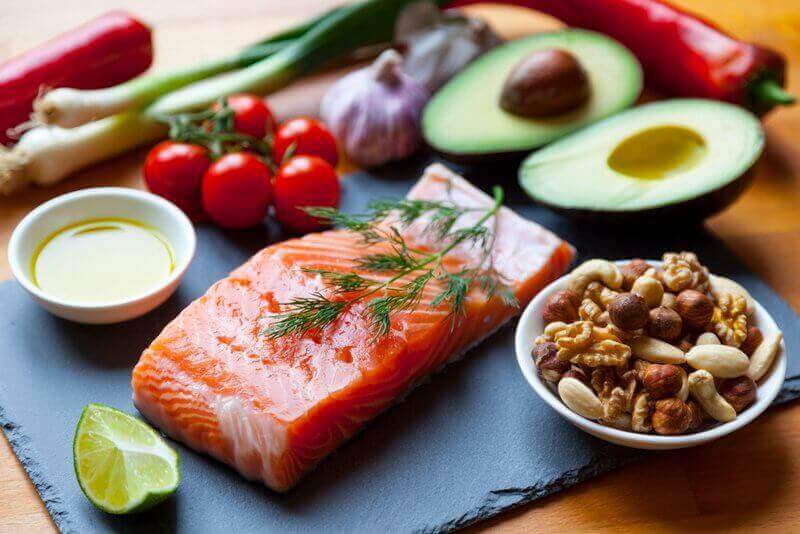
DHA and Omega 3 Fatty Acids ^
Omega 3 Fatty Acids are essential fatty acids that can only be obtained through food or supplementation – our bodies can’t make them, and they’re needed for building the brain, nerves and eyes and for supporting the heart and immune system.
They reduce inflammation in the body and can lower risk of chronic conditions like heart disease, hypertension, diabetes, arthritis and much more. They also assist in the production of breast milk. Docosahexaenoic acid, or DHA, is a type of omega-3 fatty acid that specifically affects the brain and nervous system and positively influences behavioral and cognitive functions in the growing baby. High levels of omega-3s in pregnancy are associated with a reduced risk of preeclampsia, preterm birth and maternal depression/postpartum mood disorders. (source)
Most people are very deficient in this nutrient because the main sources of DHA and omega-3s are fatty fish and organ meats, two nutrient dense foods that are not consumed on a regular basis in the typical western diet. Plant sources used to be promoted as a source of omegas, but we now know they are not ideal because they are composed of a shorter chained omega-3 called alpha-linolenic acid (ALA) which our bodies can’t convert to DHA very well.
When choosing fish that are high in omega-3’s and DHA, opt for species that are low in mercury and other contaminants. You’ll find a list of recommended options below under “Food to Embrace.”
Minerals ^
Although vitamins often take center stage when it comes to discussions on pregnancy nutrition, minerals play a vital supporting role. For example, Vitamin’s D and K play an essential role in bone development, but so do magnesium, calcium, and other minerals. That’s one of the reasons bone broth – which is high in minerals – is listed as a highly recommended food below.
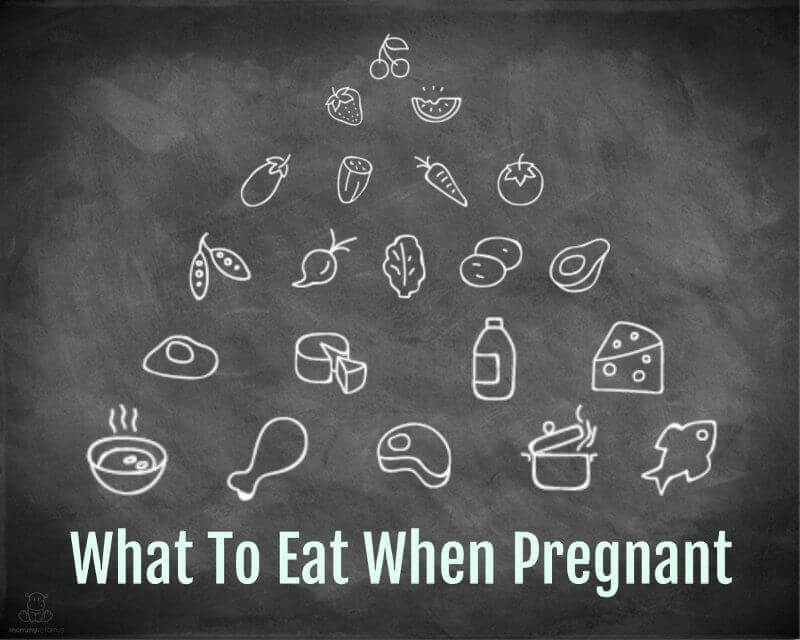
What To Eat When Pregnant ^
Now that we’ve covered the why, it’s time to move on to the what.
The number one thing to prioritize when shopping and cooking is REAL food. While that statement might seem overly simple, we are bombarded on a daily basis with claims from food products that make this very confusing. Before there was nutrition science and the food industry, people just ate food that they were able to hunt/grow/prepare at home. At the end of the day, the best foods for our bodies will not be made in a factory or concocted in a lab but grown or derived from nature. Following are some key foods that have an abundance of the nutrients we talked about above.
1. Vegetables and Fruits
Fill your plate with a variety of different colors at each meal and focus more on vegetables, viewing fruit as an occasional treat or dessert. Fresh is best, frozen is next, and canned is last as many nutrients are destroyed in the high heat process of preserving. There’s also the issue of bisphenol in canned products – which is sometimes present even when packaging is labeled as “BPA free.”
Local produce that is in season will be at the peak of freshness- making it more nutritious and better tasting – than food that has stored in a warehouse. Pair vegetables with fat to protect valuable antioxidants and nutrients during the cooking process, help your body regulate sugar absorption in the bloodstream, and maximize nutrient absorption.
Eating organically grown produce is ideal – it’s best to avoid pesticide exposure as much as possible, but if that is difficult, then educate yourself on the “dirty dozen” and stick to the produce in the clean category. Of course, wash all produce thoroughly to remove any soil borne bacteria and pesticide residue that may be harmful to a growing baby. It also might be worthwhile to consider supplementing with a soil-based probiotic, which contains beneficial strains found in the soil.
2. Pastured Meats
Eating quality meat is a topic worthy of its own post, but let’s go over the highlights for now. Buy meat that has been raised on pasture (meaning, not confined in a small space lying in fecal matter with limited access to fresh air) and not been injected with antibiotics, hormones, or given genetically modified feed. The nutritional benefits of pastured animals is consistently shown to be superior to its grain-fed counterparts.
Here are two comparative studies done on chicken and beef which show how feed and living conditions affect nutritional content. We aren’t just what we eat…we are what our food eats, too.
When selecting cuts, buy meat on the bone with skin on (for chickens) to get all of the nutrients that are found in animal fat (not to mention using that fat during cooking to get a tender and much more flavorful result!). Consuming organ meats such as liver is a great and inexpensive way to load up with A, D, K, and B vitamins as well as iron. You can channel your inner Julia Child and whip up some delectable chicken liver pate, or you can simply grate it into every day foods like ground beef tacos. If you are panicking at the very thought of cooking an animal liver let alone eating it, don’t worry! There are clean sources of desiccated liver that you can consume in capsule form – here’s what I use.

3. Eggs
Pastured eggs, particularly the yolks, are a nutritional powerhouse, high in omega-3s, vitamins A, D, E, K, B6, folate, choline, biotin and other trace nutrients. Aim to eat 2-3 eggs per day which can be prepared in many different ways (hard boiled, veggie and meat omelets, blended egg and banana “pancakes”, quiche, etc).
4. Wild Caught Seafood
High in essential omega-3 fatty acids and vitamins A and D, seafood is a wonderful source of nutrition for you and baby and ideally should be eaten 3-4 times per week with meals. Mollusks such as oysters and mussels and fatty fish such as salmon are especially high in these nutrients. Once again, be in the know with where your food is coming from. A lot of farmed seafood is given genetically modified feed and most live in very crowded conditions, resulting in heavy doses of antibiotics administered to combat disease.
Also stick to seafood that is low in mercury such as salmon, sardines, anchovies, flounder, oysters, and mussels. Avoid the following due to their high mercury content: swordfish, shark, tilefish, king mackerel, orange roughy and tuna.
Extra virgin cod liver oil is also a good source of Omega-3’s and DHA, as is caviar.
5. Healthy Fats
Don’t be afraid of fat! Fat, especially saturated fat and cholesterol, has been largely misrepresented over the last several decades, and we’re finally coming around to appreciating the vital role it plays in our health, especially during pregnancy. It is essential for synthesizing hormones, forming cell membranes, building the brain, storing energy, digesting and absorbing vitamins and much more. Did you know that breast milk is naturally high in cholesterol? That’s because its role is critical to a growing baby’s brain and nervous system.
Of course we’re talking about wholesome, traditionally used fats, not the hydrogenated oils and trans fats which are found in processed foods.
Sources of good fats are full-fat dairy such as sour cream, raw hard cheese and butter, eggs, coconut oil, organic and pastured tallow and lard, olive oil, avocados, avocado oil, nuts and seeds.
6. Fermented Foods
In traditional cultures all around the world, you will find that fermented foods are a staple. They are loaded with probiotics, enzymes, vitamin K, B-vitamins and many other beneficial nutrients that grow and feed good bacteria in the gut.
Because the gut houses a large portion of your immune system and is considered to be the “second brain”, ensuring a variety of good bacteria is vital to digestive, immune, and neurological health. Most people think of sauerkraut and kimchi when they hear “fermented food,” but there are many other wonderful foods to enjoy if cabbage isn’t your thing, including yogurt, water kefir, coconut milk kefir, ginger ale and beet kvass.
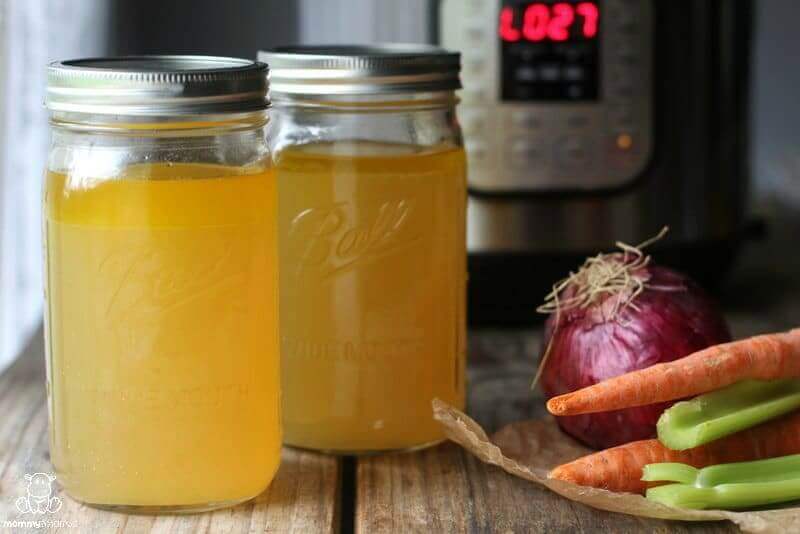
7. Bone Broth
Bone broth is pretty magical stuff. It contains minerals that act as “spark plugs” in our bodies, anti-aging components, detoxifying components and more. Consumed by cultures all over the world, this humble food is jam-packed with magnesium, calcium, and other trace minerals, proline and glycine amino acids, glucosamine and chondroitin for joint health.
Here’s how to make bone broth in a slow cooker, and here’s how to make it in an Instant Pot.
Bone broth can be seasoned with sea salt and sipped, or used as a base for Spanish rice and homemade soups like:
How much protein should I eat? ^
This is one of the most frequently asked questions about pregnancy nutrition. Before we categorized food into macro and micronutrients (or even knew about nutrients for that matter), preindustrial societies just followed their cravings and filled up on nourishing food until they were satiated. No one was sitting around calculating how many grams of protein were in the meal they were about to eat.
For the most part our bodies are wise and will let us know what we need, but sometimes due to modern factors (like the availability of lots of sweets) our bodies cravings can be skewed. When it comes to protein, modern mamas should aim for 75 to 100 grams of protein every day. (Charts of food and grams of protein they contain can be easily found online)
More important than the quantity, though, is the quality. Walk past the flashy protein bar boxes that promise a myriad of miracle working wonders and load up on pastured meats, eggs, and dairy as your main source. If you find yourself craving sweets or carbs constantly, that’s a sign that you need to up your protein intake.
Foods To Limit Or Avoid ^
- Sugar and artificial sweeteners (including fruit juice and soft drinks)
- Caffeine
- Alcohol
- Sprouts
- Deli meat
- Soft raw cheeses
Should I take a prenatal? ^
This is a topic worthy of its own post, which is coming soon.
Feeling Overwhelmed? ^
Maybe your brand new to real food and feeling completely overwhelmed, or perhaps you’re on a tight budget and acquiring all of these foods in their best form is not always possible.
Take a deep breath, relax, and focus on what changes feel doable right now. Nourishing yourself is a marathon, not a sprint, and every step in a healthy direction will provide lasting benefits for both you and your baby.
Also, if budget is an issue, here are 21 tips for saving money while eating healthy.
Book Recommendations ^
If you want to rock your pregnancy and birth, I highly recommend picking up a copy of The Mama Natural Week-by-Week Guide to Pregnancy & Childbirth. It’s an excellent resource that’s written from an evidence-based, natural perspective.
Need help making REAL food work in REAL life? ^
Then I’d love to give you a free copy of my ebook – The Busy Mama’s Guide To Getting Dinner On The Table – as a gift for signing up for my newsletter. You’ll get my top seven tips for simplifying meal prep, plus updates when I post new healthy recipes, exclusive gifts, coupons (I was able to give away a jar of free coconut oil to anyone who wanted it recently!), and other goodies. Don’t miss out!
About Jordan Callahan, CPM
Jordan Callahan is a Certified Professional Midwife who has been working with families in the birth field since 2007. She’s helped babies out in homes, birth centers, hospitals and overseas – there have even been some car surprises. 🙂 Jordan has a special interest in nutrition research and enjoys discussing all things related to healthy eating and good food. An avid cook herself, she aims to inspire families to get back in the kitchen and enjoy the connection of preparing real food in a fun and creative way. She and her husband live in Chattanooga, TN where she’s in temporary “retirement” to raise her two sweet boys.


